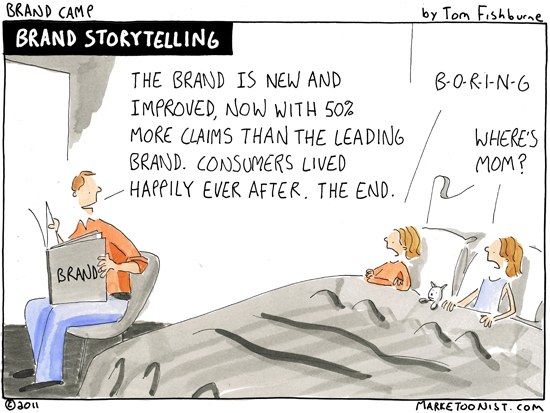
Corporate communications and storytelling: stop talking!
All of us communication professionals love words. We just loooooove them. That’s what brought me to this job. But in a world where nonverbal communication plays a major role compared to words, we should take a moment to consider finding alternate ways to tell stories and carry messages.
If I say “communication”, you will probably think about words. Web pages, tweets, phone calls, real-life conversations, and so on. I certainly would.
What if we were wrong? A number of studies have shown that when people are communicating, nonverbal components outplay words. Yep, that’s right: body language and the tone you’re using have more impact than what you’re actually saying.
Words play a minor role in human communication
Some extreme studies as far as leaving only 7% of the understanding to verbal aspects. This would mean that 93% of our communication is nonverbal. Other studies give a lower number, usually around 60%.
For marketing, branding and storytelling experts these numbers are very insightful. Whether it is 60% or 93% is not that important. What is relevant for us is that verbal components only play a minor role in communications.
So what can we learn from these studies? What does nonverbal mean in a world where every brand and company tweets, writes blog posts and publishes reports?
Storytelling means: shut up and do something already

Just as body language has a big impact, acts matter. So don’t stop at talking or writing. Instead, just do something. If you create a product or service, use what storytellers call “Magical Gifts”. Magical Gifts are surprises meant to delight customers.
The Knab Bank does this in a great way. In his talk at the Service Design Conference 2016, René Frijters explained how they succeed at delighting customers. It’s no surprise that the typical customer will see banks as boring. Actually, nobody really loves their bank. The Knab team fixed that with “Magical Gifts”.
One day, the customer support team got a letter from a man named Jan. He told them his credit card was broken. In fact, his dog Rex played with Jan’s card and ended up eating it. Of course, the bank would replace the card. But when Jan received his new card at home there was a little box with it. When he opened it there was a note: “This is for Rex so your card can be safe”. In the box, there was a bone for his dog.
Instead of writing boring or even comforting words in a letter, the Knab Bank team just did something. So now it’s your turn: what can you do to show to your customers what you mean? Or that you care about them? All of these without words?
Storytelling means: shut up and show something already
We use words every day. But in the 21st-century communication visual storytelling complements, and even replaces words. Visual elements like emojis help people communicate feelings. You know about GIFs? Well these little animated pictures will help with this too.

As a communicator, always try to support your verbal communication with visual clues. And even replace it if you can. I know you probably love words, I love them too. But remember what French writer Antoine de Saint-Exupéry once said: “Perfection is achieved not when there is nothing more to add, but when there is nothing left to take away”. Although these are words themselves, you should try and use visuals instead of words when you have a chance.
With emotions and tone of voice, you are more likely to have your customers’ attention with what you say.
Let’s meet and make Storytelling happen
Enough words for now. We should meet so you can enjoy a human communication with proper body language and tone of voice. Our experts are always happy to meet people. They are eager to discuss how Storytelling can impact your communication. Why not start with a chat in the lower right corner of your screen? It works with emojis and GIFs as well!